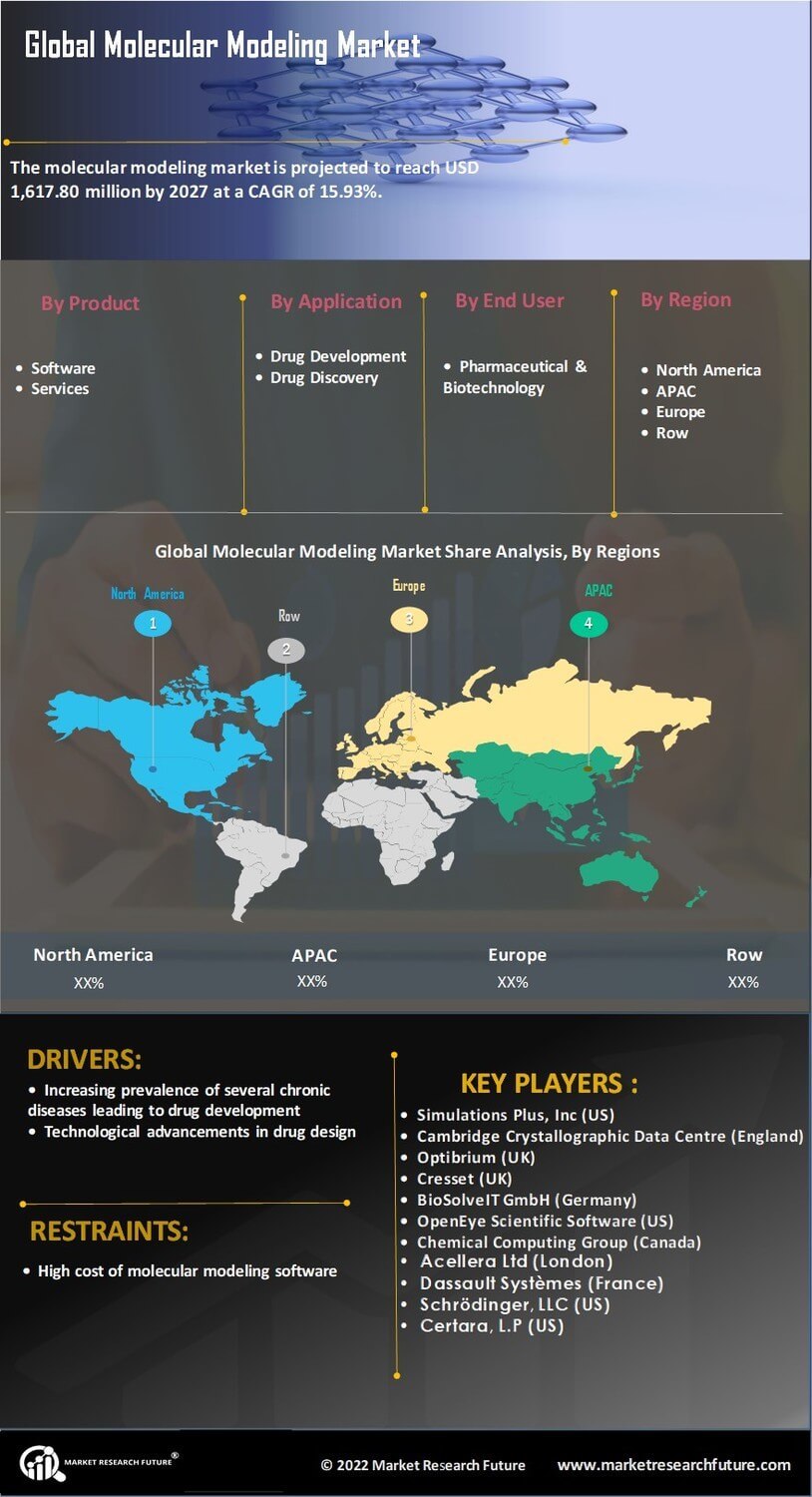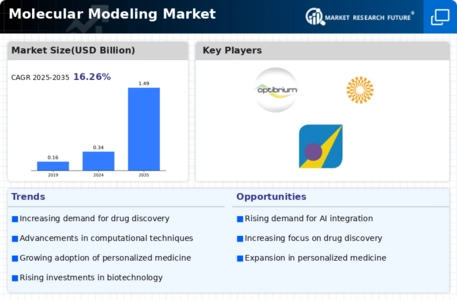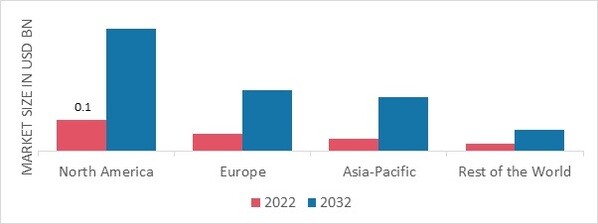Market Growth Projections
The Global Molecular Modeling Market Industry is projected to experience substantial growth over the next decade, with a market valuation of 0.34 USD Billion in 2024 and an anticipated increase to 1.49 USD Billion by 2035. This growth trajectory suggests a compound annual growth rate (CAGR) of 14.47% from 2025 to 2035, reflecting the increasing adoption of molecular modeling techniques across various sectors. The market's expansion is likely driven by advancements in technology, rising demand for drug discovery, and the integration of artificial intelligence, positioning molecular modeling as a pivotal component in scientific research and development.
Rising Demand for Drug Discovery
The Global Molecular Modeling Market Industry experiences a notable surge in demand driven by the pharmaceutical sector's need for efficient drug discovery processes. Molecular modeling techniques facilitate the identification and optimization of drug candidates, significantly reducing time and costs associated with traditional methods. In 2024, the market is valued at 0.34 USD Billion, reflecting the industry's growing reliance on computational methods to enhance drug efficacy and safety. As the industry evolves, it is projected that by 2035, the market could reach 1.49 USD Billion, indicating a robust growth trajectory fueled by advancements in molecular simulations and predictive modeling.
Advancements in Computational Power
The Global Molecular Modeling Market Industry benefits immensely from advancements in computational power, which enhance the capabilities of molecular modeling software. The integration of high-performance computing and cloud-based solutions allows researchers to conduct complex simulations and analyses that were previously unattainable. This technological evolution not only accelerates research timelines but also improves the accuracy of molecular predictions. As computational resources become more accessible, the market is expected to grow at a CAGR of 14.47% from 2025 to 2035, underscoring the potential for innovative applications across various scientific disciplines.
Emergence of Artificial Intelligence
The integration of artificial intelligence (AI) into the Global Molecular Modeling Market Industry represents a transformative shift in how molecular simulations are conducted. AI algorithms can analyze vast datasets, identify patterns, and predict molecular behavior with unprecedented accuracy. This synergy between AI and molecular modeling not only streamlines the research process but also enhances the predictive power of simulations. As AI technologies continue to evolve, their application in molecular modeling is expected to drive market growth, fostering innovations in drug design and materials science.
Increased Focus on Personalized Medicine
The Global Molecular Modeling Market Industry is increasingly influenced by the shift towards personalized medicine, which emphasizes tailored therapeutic approaches based on individual patient profiles. Molecular modeling plays a crucial role in understanding the interactions between drugs and biological systems, enabling the design of customized treatment regimens. This trend is particularly relevant in oncology and rare diseases, where precision medicine is gaining traction. The growing emphasis on personalized healthcare solutions is likely to propel the market forward, as stakeholders seek to leverage molecular modeling to enhance treatment outcomes and patient satisfaction.
Growing Investment in Research and Development
The Global Molecular Modeling Market Industry is witnessing a surge in investment directed towards research and development initiatives. Governments and private entities are increasingly allocating funds to support innovative projects that leverage molecular modeling for various applications, including drug development and materials science. This influx of capital is anticipated to accelerate technological advancements and foster collaborations between academia and industry. As a result, the market is poised for significant growth, with stakeholders recognizing the value of molecular modeling in driving scientific breakthroughs and enhancing competitive advantage.





